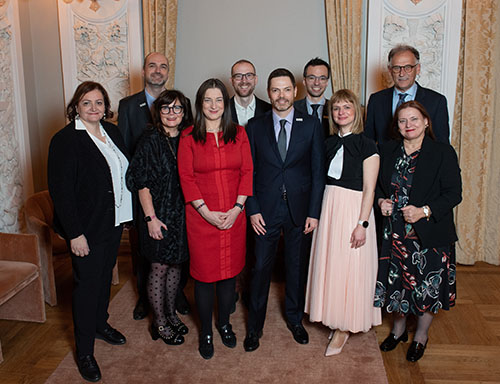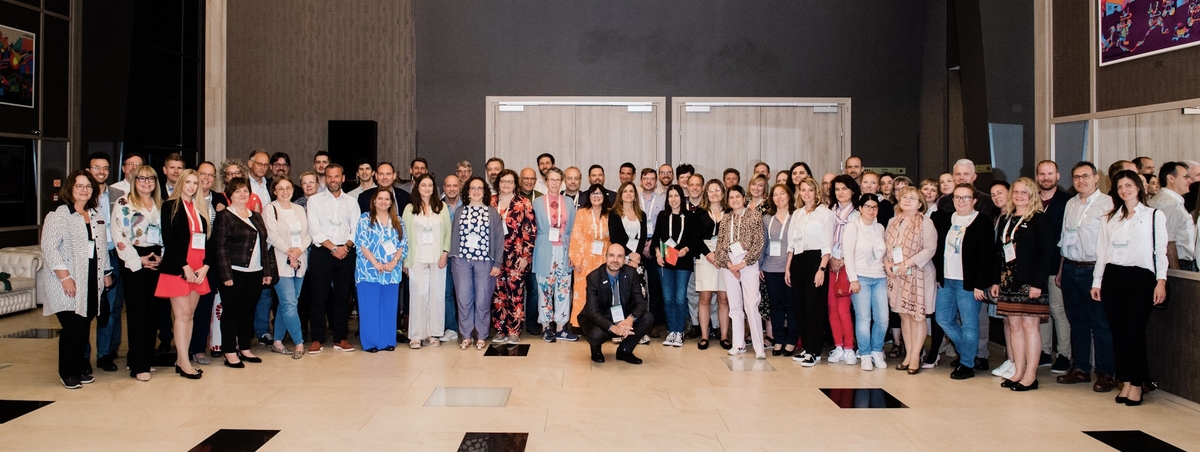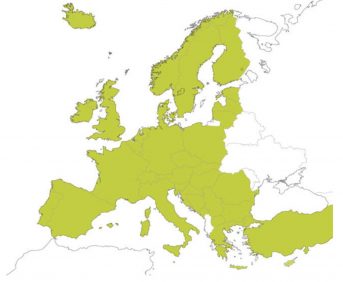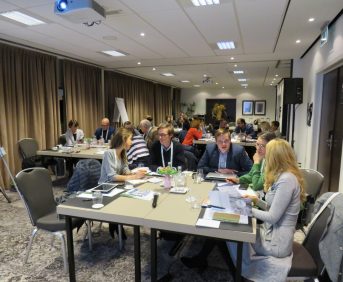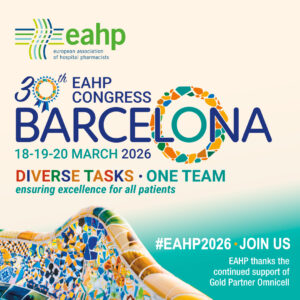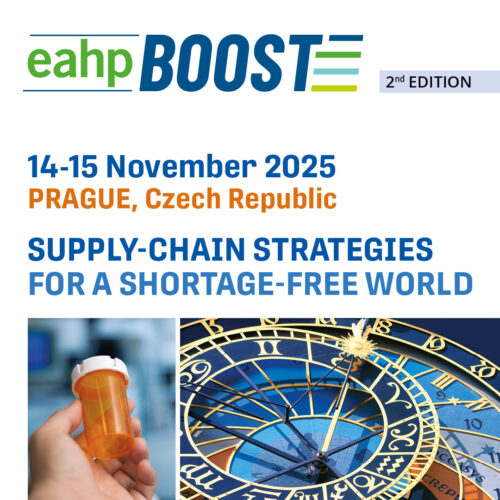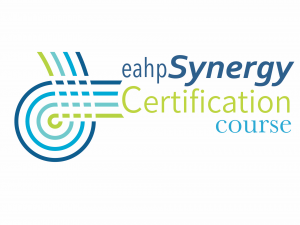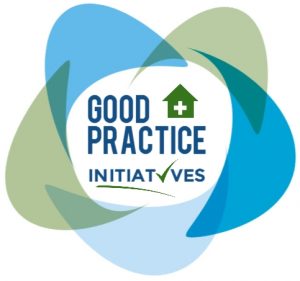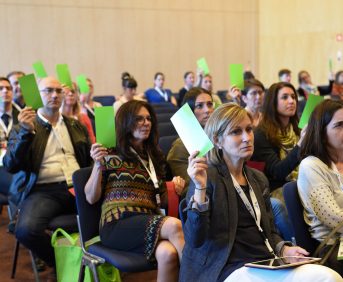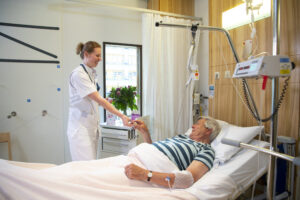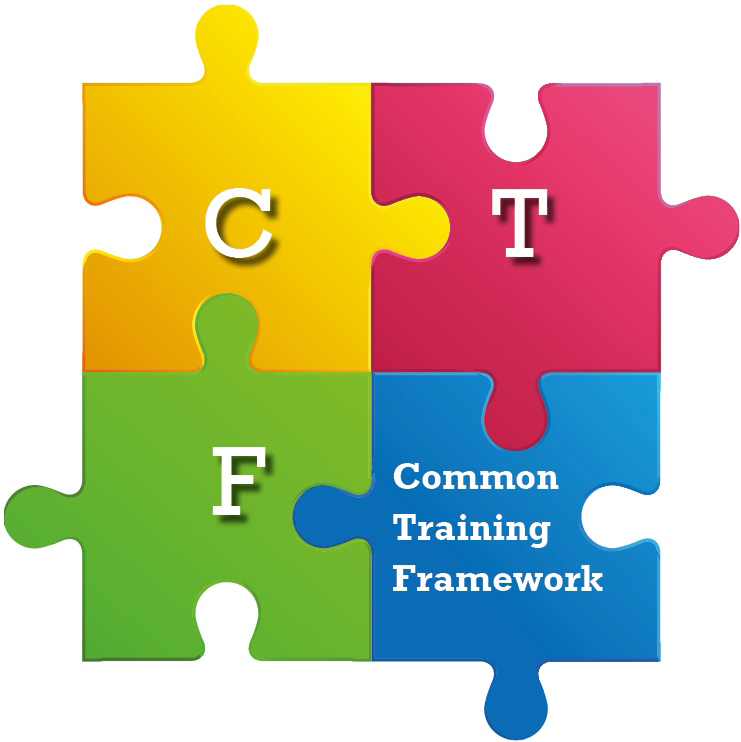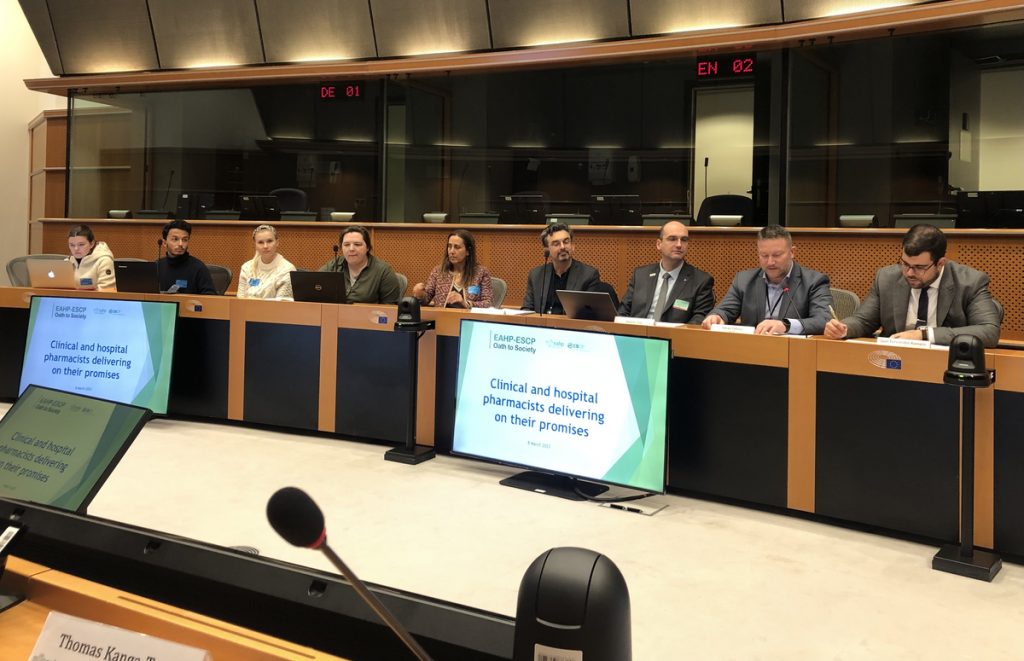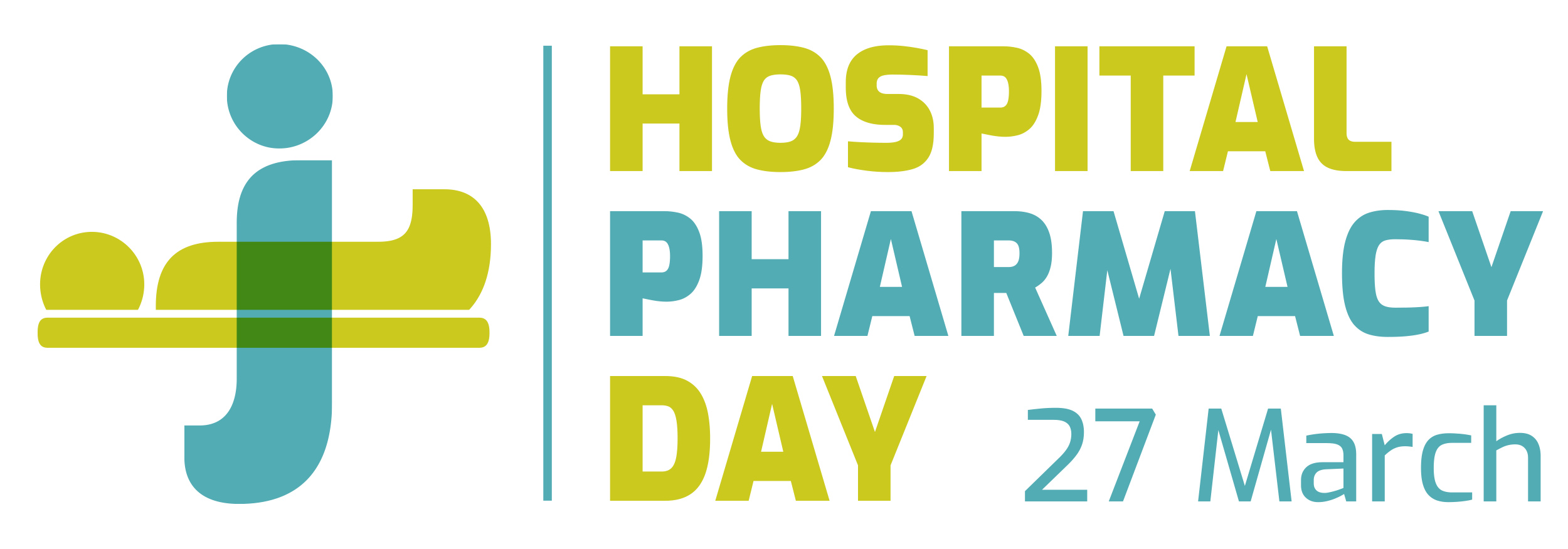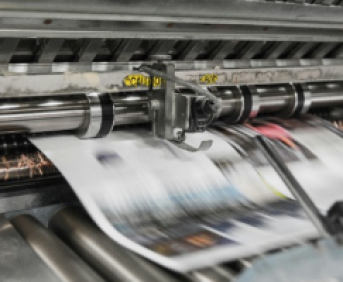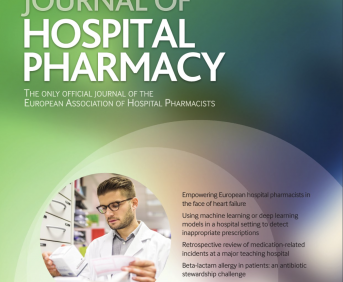ENHANCING PHARMACOTHERAPY IN A RURAL HOSPITAL IN UGANDA: A QUALITY IMPROVEMENT INITIATIVE
Pdf

European Statement
Clinical Pharmacy Services
Author(s)
Julen Montoya Matellanes, María Sánchez Argáiz, Pablo González Moreno, Sister Jacinta Wajinku, Ana Soler-Rodenas, Luis Ortega Valín, David Roca Biosca
Why was it done?
The goal of this initiative was to address the challenges faced in medicine management at the hospital, including low adherence to the HDF and the presence of numerous medicines not listed in the guideline. These issues hindered effective treatment options for patients and highlighted the need to improve compliance with national guidelines.
What was done?
We conducted a comprehensive review of the hospital drug formulary (HDF) in a rural Ugandan hospital to optimize pharmacotherapy and improve local access to essential medicines. This initiative involved assessing adherence levels to the HDF, identifying therapeutic needs, and evaluating drug availability.
How was it done?
A mixed-methods approach was used, combining qualitative and quantitative data. We compared the medicines available in the storage facilities s with those listed in the current HDF (published in 2016). Key indicators, such as adherence to the HDF and the number of available medicines not included in the guideline, were calculated. In addition, interviews with the responsible pharmacist provided insights into the causes of medicine shortages. We also compared the HDF with the 2023 Uganda Clinical Guidelines and the Essential Medicines and Health Supplies List for Uganda to identify therapeutic gaps.
What has been achieved?
The review revealed that out of 234 medications listed in the HDF, only 127 (54%) were available at the hospital pharmacy, while 107 (46%) were unavailable or out of stock. Adherence to the HDF was 63%, and 164 available medications were not included in the guideline. Ninety-nine potential therapeutic gaps were identified and it was highlighted that the main reasons for drug shortages included discontinuation of compounded drugs preparation and expiry of medicines due to low usage. This initiative provided a clear picture of the severity and causes of the issues related to access to medications.
What next?
To address these challenges, we recommend implementing staff training in medication management, systematizing stock and ordering processes, updating the HDF based on clinical and economic criteria, and reactivating the magistral formulation laboratory. With these measures we aim to improve medication availability and ensure better patient outcomes in this rural hospital. Additionally, the method employed can be standardized as a valid approach to assess drug availability in any hospital, with particular relevance in low-resource countries facing economic challenges and lacking electronic inventory control systems.
PAUSING NON-CRITICAL MEDICATION DURING SHORT HOSPITALIZATION
Pdf

European Statement
Clinical Pharmacy Services
Author(s)
Arnela Boskovic
Gitte Stampe Hansen
Why was it done?
To ensure rational use of medicines during the acute phase of illness, an interdisciplinary group consisting of physicians, nurses, pharmacists, and the Hospital Pharmacy was initiated to determine if some medicines could be paused during shorter hospital admissions at The Medical Acute Care Unit, Bispebjerg Hospital.
What was done?
Patients in acute phase of illness may experience fatigue, nausea, swallowing difficulties, and cognitive challenges when faced with large amounts of oral medicine. Therefore, prioritizing life-critical medicines during hospitalization is essential, while non-critical medicines could temporarily be paused. Additionally, there is often medicine waste, where drugs are assumed to be administered but remain untouched on the bedside table. In acute care units with complex patients, optimizing nursing time, shelf space in the medicine room and managing costs is crucial for appropriate medication.
How was it done?
Information about the new practice was given via newsletters, oral presentations, and signs at the doctor offices and in the medicine room. The group identified statins, multivitamins and calcium supplements as non-critical, and these were hereafter removed from the shelves in the medicine room. The interdisciplinary division of roles were as follows; Physicians: Prescribe critical medicine and temporarily pause non-critical medicine; Nurses: Do not administer statins, multivitamins, or calcium supplements. If the prescription has not been paused, request the physician to do so; Pharmacists: Assist in pausing non-critical medicines; Hospital Pharmacy: Ensure availability of the correct medicine in the medicine room.
What has been achieved?
Temporarily pausing statins, multivitamins, and calcium supplements during short hospitalization led to minimizing medicine waste and freed up time for the nurses to do other nurse-specific tasks. Medicine administrations by nurses were reduced by 87-96%. It also resulted in optimized space in the medicine room, making space for more critical medicine such as medicines to treat epilepsy and Parkinson’s disease.
What next?
Expanding the list of non-critical medicine during short hospitalizations is in the pipeline. This will be done by interdisciplinary collaboration and will free up time for the nurses and doctors to focus on the acute care of the patient.
A MULTIDISCIPLINARY APPROACH TO TAILOR MADE NUTRITION
Pdf

European Statement
Clinical Pharmacy Services
Author(s)
G.A. Vairani, B. Faitelli, B. Crivelli, F. Pieri
Why was it done?
An appropriate nutrition is a therapeutic intervention that improves clinical outcomes for each patient by reducing or preventing complications such as pressure ulcers and infections. The goal of the Hospital Pharmacy is to provide therapeutic monitoring for all nutritional therapies prescribed in the hospital and to support the optimization of pharmacological therapies associated with the specific nutrition plan. The formulary provides Physicians and Dietitians a view of the dietary products available in the hospital, allowing them to select the most suitable product based on the patient’s clinical condition. The structured request form is a valuable tool to verify that there are no pharmacological interactions between the chosen dietary product and the patient’s ongoing medications. Furthermore, it ensures that a dietitian is consulted for every prescription.
What was done?
A multidisciplinary team was established, including Dietitians, Hospital pharmacists, and Physicians, to ensure adequate and safe nutritional support for each patient. The hospital pharmacy developed a formulary of available dietary products categorized into parenteral nutrition, enteral nutrition, and oral nutrition supplements. Additionally, a customized request form for nutritional products was created. After the approval of dietitians, hospital pharmacists can proceed with dispensing, ensuring controlled distribution to hospital departments.
How was it done?
The Hospital Pharmacy first consulted with dietitians to add or remove specific dietary products from the Therapeutic Formulary, based on the most frequently treated pathologies and clinical cases. Once the products to be stocked were defined, a manual was created, listing the names, nutrient types, and administration methods for each dietary product.
For the structured request, the mandatory fields to be filled in are: patient’s identity , dietary product, dosage and duration of treatment and the dietitian’s signature.
What has been achieved?
The structured request form and the Dietary Products Manual allowed us to have a comprehensive overview of the number of patients treated with a specific dietary product and to monitor prescriptions in general, ensuring the best possible clinical outcome.
What next?
The Hospital Pharmacy will organize training days with dietitians on the selection of the most appropriate dietary product for each patient, as well as the correct handling and administration of these products.
ESPESANET: MULTIDISCIPLINARY PHARMACEUTICAL CARE IN PATIENTS WITH DYSPHAGIA
Pdf

European Statement
Clinical Pharmacy Services
Author(s)
Sanjuan-Casanova, Iria; Cerdeira-Regueira, Elena; Fernández-Oliveira, Carla; Lago-Rivero, Natividad; Iglesias-Moreno, Jose Manuel; Alfonsín-Lara, María; Agra-Blanco, Iván, Martínez-López De Castro, Noemí.
Why was it done?
Dysphagia is a swallowing disorder that affects patients’ safety and quality of life. Within our healthcare area, patients regularly come to the Hospital Pharmacy Service (HPS) for nutritional assessments and dispensing of thickeners. This results in an increasing workload and the need for patients to come to the hospital. This presents an actual challenge particularly since many of them have reduced mobility. The establishment of EspesaNet aimed to reduce waiting times, to facilitate dispensing at other care points and to improve patients’ quality of life.
What was done?
A dispensing circuit for thickeners, EspesaNet, was implemented. We established an interdisciplinary, comprehensive and continuous care system for patients with dysphagia through the decentralization of nutritional follow-up, adjustment of pharmacological treatment, and dispensing of thickeners in health centers (HC) via primary care pharmacists (PCP).
How was it done?
The implementation of EspesaNet was achieved through the establishment of a multidisciplinary work team, the creation of a theoretical-practical training program from the HPS (which included three training sessions of two hours each), and a communication network through e-consultations between HPS and PCP.
What has been achieved?
From February to June 2024, 22 HC and 56 patients (12 with reduced mobility) were enrolled in the project. After the initial nutritional assessment (conducted via home visits and teleconsultations for immobilized patients) and with the premise of not requiring additional nutritional intervention, patients were referred via e-consultation to the PCP for ongoing follow-up and subsequent dispensing of the thickener.
The implementation of the circuit has resulted in:
-Access for all involved professionals to e-consultations and the electronic prescription software (Silicon®).
-Safekeeping of all patients’ clinical information in a single electronic medical record (Ianus®).
-Establishment of a remote evaluation service for immobilized patients.
-Development of standardized treatment adjustment criteria.
-Completion of 56 e-consultations
-An estimated savings of 2400 kilometers in travel distance for a single dispensing via FAP.
What next?
EspesaNet, since its implementation, has provided numerous benefits for patients and professionals. Our goal is to reach more HC, ensuring the correct identification and follow-up of patients with dysphagia. Moreover, we aim to facilitate patients’ collection of thickeners and improve their access to information and better-trained professionals.
OPTIMISING CUSTOM PACKS: A STEP TOWARDS A SUSTAINABLE HOSPITAL?
Pdf

European Statement
Selection, Procurement and Distribution
Author(s)
A. KANDEL (1), L. CABRIT (1), C. HUMARAUT (1), A. MASSRI (2), C. TAILHADES (1), S. ARRAKI ZAVA (1), V. GRENOUILLEAU (1)
(1) Pharmacy Department, Medical Devices Unit, Pau Hospital Center, France
(2) Intensive care unit, Pau Hospital Center, France
Why was it done?
Medical devices (MDs) and drugs account for 55% of the carbon footprint of a hospital’s French healthcare system, making this sector a key focus for the ecological transition. The MD sector alone is responsible for 32% of our hospital’s CO2 emissions, underlining the need to rethink our practices in order to reduce our environmental impact.
What was done?
Elimination of waste produced unnecessarily by optimising customised packs (CP) containing the MD required for treatment.
How was it done?
After a multidisciplinary team (pharmacists, intensive care units, anaesthetists, nurses) was put together, packs containing unused medical devices (UMD) were identified in 2 pilot departments: anaesthesia and intensive care. The packs were weighed with and without the UMD. The savings in terms of waste weight and carbon footprint were calculated according to the type of waste: general waste or biohazardous waste. In conjunction with the medical teams and suppliers, the re-evaluation of the MD required and the withdrawal of UMDs led to the updating of CP in the pilot departments.
What has been achieved?
The packs identified include: the suture pack (SP), the central venous line pack (CVL) and the epidural pack (EP). Over one year, the weight of waste avoided was: 64 kg for the SP, 87 kg for the CVL pack, 55 kg for the EP. After modifying these packs, annual CO2 emissions were reduced by 55% for the SP, 14% for the CVL pack and 8% for the EP, with a total annual saving of €5,423. The annual weight of waste was reduced by 206 kg, a saving of 92 kg of CO2: the equivalent of 86 Paris-London train journeys.
What next?
The re-evaluation of CP can generate a significant ecological impact. This initiative is intended to be rolled out on an institutional scale, with the active collaboration of the sustainable development department, and as part of future calls for tender. These adjustments save time for care staff, significantly reduce the carbon footprint, and contribute to the ecological transition. It is essential to strike a balance between economic and environmental imperatives, given the financial constraints facing public hospitals.
BRAIN DEATH: RADIOCHEMICAL PURITY OF THE RADIOPHARMACEUTICAL 99mTc-HMPAO STABILIZED WITH COBALT
Pdf

European Statement
Patient Safety and Quality Assurance
Author(s)
Diana Monteiro
Luísa Álvares
Sara Brandão Madureira
Patrocínia Rocha
Why was it done?
The confirmation of a clinical diagnosis of brain death requires the demonstration of the cessation of brainstem functions and their irreversibility. Therefore, when this evaluation is incomplete or unreliable, it is necessary to support this diagnosis using diagnostic tests such as brain perfusion SPECT. This is performed after the injection of the radiopharmaceutical technetium-99m hexamethylpropyleneamine oxime (99mTc-HMPAO) and by assessing the obtained images for the lack of cerebral perfusion to confirm the diagnosis.
Given the importance of reliable results, a high radiochemical purity of 99mTc-HMPAO is imperative in quality control to prevent false positives.
What was done?
Selection of a method to evaluate the radiochemical purity of 99mTc-HMPAO.
How was it done?
A literature review was conducted to select the most suitable method for the conditions existing in the institution. The research focused on the Summary of Product Characteristics (SmPC), the European Pharmacopoeia (Ph. Eur. 11.0), the United States Pharmacopeia (USP 42) and several published articles.
After selecting the method, three assays were performed to validate it.
What has been achieved?
For evaluating the radiochemical purity of 99mTc-HMPAO, both the SmPC and Ph.Eur. 11.0 recommend a combination of two thin-layer chromatography (TLC) methods with a high-dimension stationary phase, for which the institution does not have a chromatographic tank.
The USP 42 describes a combination of three TLC methods, using acetonitrile as the mobile phase, which is also unavailable at the institution.
In contrast, the miniaturized method by Fuente et al. uses two TLC methods, with a silica gel stationary phase and sodium chloride (0.9%) and methyl ethyl ketone as mobile phases. This method was selected given that the institution has the required phases, the stationary phase dimensions are suitable for the available chromatography tanks and the execution time for the assay is feasible.
For method validation, three assays were conducted, yielding values exceeding 80% (the reference value).
The selected method represents a rapid, reproducible and reliable alternative for evaluating the radiochemical purity of 99mTc-HMPAO. It was implemented in the institution in October 2022.
What next?
In the future, we aim to develop quality control methods for all radiopharmaceuticals in use at the institution, in order to guaranty the quality of all the exams performed.
Hospital pharmacists’ professional empowerment through skills integration: experience of international cooperation between Italy and Tanzania
Pdf

European Statement
Education and Research
Author(s)
Agnese Bosio, Chiara Carcieri, Sixberth Bugeraha, Silvia Scalpello, Giovanna Fazzina, Maria Carmen Azzolina, Gianluca Miglio, Annalisa Gasco
Why was it done?
Drug dispensing and patient monitoring are institutional activities of hospital pharmacists worldwide. Nevertheless, the enhancement of managerial capabilities, hard and soft skills is crucial to tackle the critical challenge arising from geographical, epidemiological, demographic, cultural and legislative differences between different countries.
What was done?
An initiative for cooperation and interaction between hospital pharmacists from different income countries has been developed.
How was it done?
The initiative was led by a pharmacist from an Italian hospital who was hosted by a hospital in southern Tanzania and spent a month collaborating with local hospital pharmacists, in order to streamline integrated workflows and optimise clinical care outcomes and professional training.
What has been achieved?
A Strengths Weaknesses Opportunities Threats (SWOT) matrix was developed to assess the impact on three main areas: drug management, clinical pharmacy and pharmaceutical care.
Strengths: attitude for workflow standardisation, multidisciplinary and multicultural teamwork, sharing of expertise and best practice, speed up of limiting processes in order to develop activities in support of patients and clinicians, time and effectiveness in qualified staff training.
Weaknesses: complexity of procedures for drug import, hospital staff shortage (both pharmacists and physicians), absence of primary care and hospital-territory continuity of care network, clinical severity of patients admitted to hospital, imbalance between clinical pharmacy/pharmaceutical care in favour of drug management.
Opportunities: professional growth due to new healthcare challenges facing, soft skills improvement (problem solving, versatility, working under stress, teamwork, integration, overcoming prejudices), hard skills enhancement (logistics, international legislation, scientific English), budget optimisation for new investments (equipment/staff), improvement of patient safety and overall level of care.
Threats: language/cultural barriers, variable learning curve and resistance to change, barriers in social/professional relationships, individual variability in adaptation period, different patient perceptions of health and medical care.
What next?
Professional integration of hospital pharmacists from different educational and cultural backgrounds could enhance their ability to address different clinical, environmental and socio-economic issues, with the following outcomes: strengthening the professional pathway; optimising outcomes with consequent cost savings; improving the quality of healthcare for patients.
Assesing cold chain compliance for biotherapy drugs in a university hospital’s medical departments
Pdf

European Statement
Patient Safety and Quality Assurance
Author(s)
AMINE BAYEN, OUMAIMA KHARKHACH, HICHAM EL HORR, LHOUSSAIN ZARAYBY, SANAE DERFOUFI
Why was it done?
It has been observed that within the gastroenterology, neurology, internal medicine, rheumatology, and dermatology departments, there exist inconsistencies and disparities. These include extended transportation times averaging 8 minutes, a lack of isothermal bags for transportation, and refrigerators not connected to the main hospital generator.
Strict adherence to storage guidelines is crucial, as any breach in the cold chain could compromise the drug’s therapeutic effectiveness, increase the risk of adverse effects, and lead to significant financial losses for healthcare institutions.
What was done?
Ensuring optimal storage and transportation conditions for biotherapy drugs in various medical departments within a university hospital by assessing and improving cold chain compliance.
How was it done?
Implemented corrective actions and recommendations have been primarily directed towards minimizing transportation duration and procuring thermal bags for all departments handling biotherapy products. These initiatives encompass enhancing staff awareness in the cold chain process through sensitization campaigns and regularly evaluating refrigerator temperatures. Moreover, a strategic plan is underway to establish their connectivity to the generator system in the near term.
What has been achieved?
A notable reduction in the transportation time of biotherapeutic drugs has been achieved, decreasing the average duration from 8 minutes to 6 minutes. Additionally, the widespread adoption of thermal bags across audited departments has substantially bolstered the stability of biotherapeutic drugs, mitigating temperature fluctuations and enhancing patient safety. Moreover, our efforts in sensitising medical and pharmaceutical staff within these departments have yielded a significant increase in awareness and adherence to stringent cold chain protocols.
What next?
The inconsistencies and disparities identified during the assessment of the biotherapy drug cold chain within our hospital suggest a potential lack of adherence to procedural standards. This situation poses a considerable risk to patient safety, warranting further investigation and action.
Our focus will extend beyond the cold chain assessment to evaluate other pharmaceutical procedures. Specifically, we will investigate the adherence to autoclave sterility cycles for medical devices and the robustness of the preparation process for oncology medicines.
Rethinking pharmacy and therapeutics committee procedures to achieve the efficiency required to overcome hospital complexity
Pdf

European Statement
Clinical Pharmacy Services
Author(s)
Sara Rodrigues, Sofia Pinheiro, Vandewalle Björn, Paulo Martins, Sofia Ferreira, Paulo Pereria, Jorge Félix
Why was it done?
Shared decision-making between pharmacists and physicians is key to PTC functioning and efficiency. Responsibilities include managing policies and procedures for appropriate use of high quality and cost-effective health technologies at hospitals. PTC performance is paramount to overall hospital efficiency.
What was done?
This project seeks to assess and redesign (optimize) existing Pharmacy and Therapeutics Committees (PTC) procedures within a University Hospital Centre (UHC – six public hospitals). The goal is to enable sound decision-making that significantly contributes to UHC key performance indicators, all while ensuring timely patient access to effective medication.
How was it done?
The project comprises four phases: (1) gathering feedback from stakeholders (PTC members; hospital service/pharmaceutical department directors) regarding their current involvement in PTC information flows, procedures, and decision-making; (2) developing a value-based criteria-matrix, across stakeholders, in a multiple-criteria decision analysis context, to guide future PTC decision-making; (3) rethinking PTC procedures and information flows; (4) assessing the effectiveness of the redesigned PTC model after 12 months. First phase included: a Likert-scale based survey1 for PTC members to evaluate their involvement in activities described in the internal PTC regulation, and a semi-structured interview-based survey2 for all stakeholders to characterize existing information flows and PTC mediated decision-making processes.
What has been achieved?
First phase: eight of 10 PTC members participated in survey1. Activities with 100% engagement of PTC members: prescription reviews; coordination with National PTC; monitoring of medicine utilization, antibiotics resistance and safety; advise the UHC management board. Activities with major non-engagement: monitoring/reporting of complementary diagnostics prescription (87.5%); medication therapy management programs (62.5%); National pharmacovigilance system activities (62.5%); therapy cost assessment (50%). In survey2 (n=14) authorization process for medicines utilization was accurately characterized, clearly identifying responsibilities for all clinical and pharmaceutical departments. Heterogeneity exists between urgent and non-urgent utilization requests. PTC members and pharmacy departments were more likely to use electronic platforms than clinical departments.
What next?
Next phases are under way to better support current competencies, information flows, procedures, and the shared decision-making processes offering an opportunity to rethink the PTC procedures in the University Hospital Centre and leverage efficiency over hospital complexity.
Using virtual reality to introduce newly hired nurses
Pdf

European Statement
Education and Research
Author(s)
Stine Hygum Sørensen, Henrik Nielsen, Ulla Kloster, Anne Grethe Nørgaard Kyndi, Maja Vad Mortensen, Dorthe Ludvigsen
Why was it done?
The concept of medicine at Gødstrup Hospital is based on Patient involvement in the medicine process. Consequently, the patients bring their own medicine, which is stored in the patient’s room, and additional medicine is supplied in original packages. Medicine dispensing is performed in the patient’s room to allow patient participation. The medicine rooms at the hospital are quite small, because the majority of the medicine is with the patient, but it also makes medicine rooms unsuited for on-site training of new nurses.
What was done?
Virtual Reality (VR) technology was applied for introduction of newly hired nurses to medicine rooms at the hospital.
Newly hired nurses are given a four hour introduction to the concept of medicine at Gødstrup Hospital, Denmark. The introduction is given by an interdisciplinary team of a clinical pharmacist, a pharmacologist and an experienced nurse. The introduction is given in collaboration with the Centre for Research and Education (NIDO) once a month. This ensures that newly hired nurses are given the same, relevant introduction when needed.
Introduction to medicine rooms is part of the training for nurses in introductory positons. Using VR newly hired nurses are given a different and exciting introduction to medicine rooms.
How was it done?
In collaboration with the simulation unit at NIDO we made a VR-video to enable up to 20 new nurses to see the same introduction at the same time. Hospital Pharmacy staff is featured in the VR recording and guides viewers to specific parts of the medicine room, explaining important topics such as waste disposal, hygiene and anatomical therapeutic chemical (ATC) groups.
What has been achieved?
The participants are positive and give the following feedback to the VR segment of the introduction: “It was significantly easier to deal with as a newbie”. “It was very visual as being there in reality”. “There was time to learn in a calm environment”, “It worked fine as a lesson” and “It is a good change from backboard teaching.”
What next?
The monthly introductions continues and further collaboration with NIDO will result in lessons with topics such as pharmaceutical formulations and drug calculations. Perhaps VR will be included in this too.
